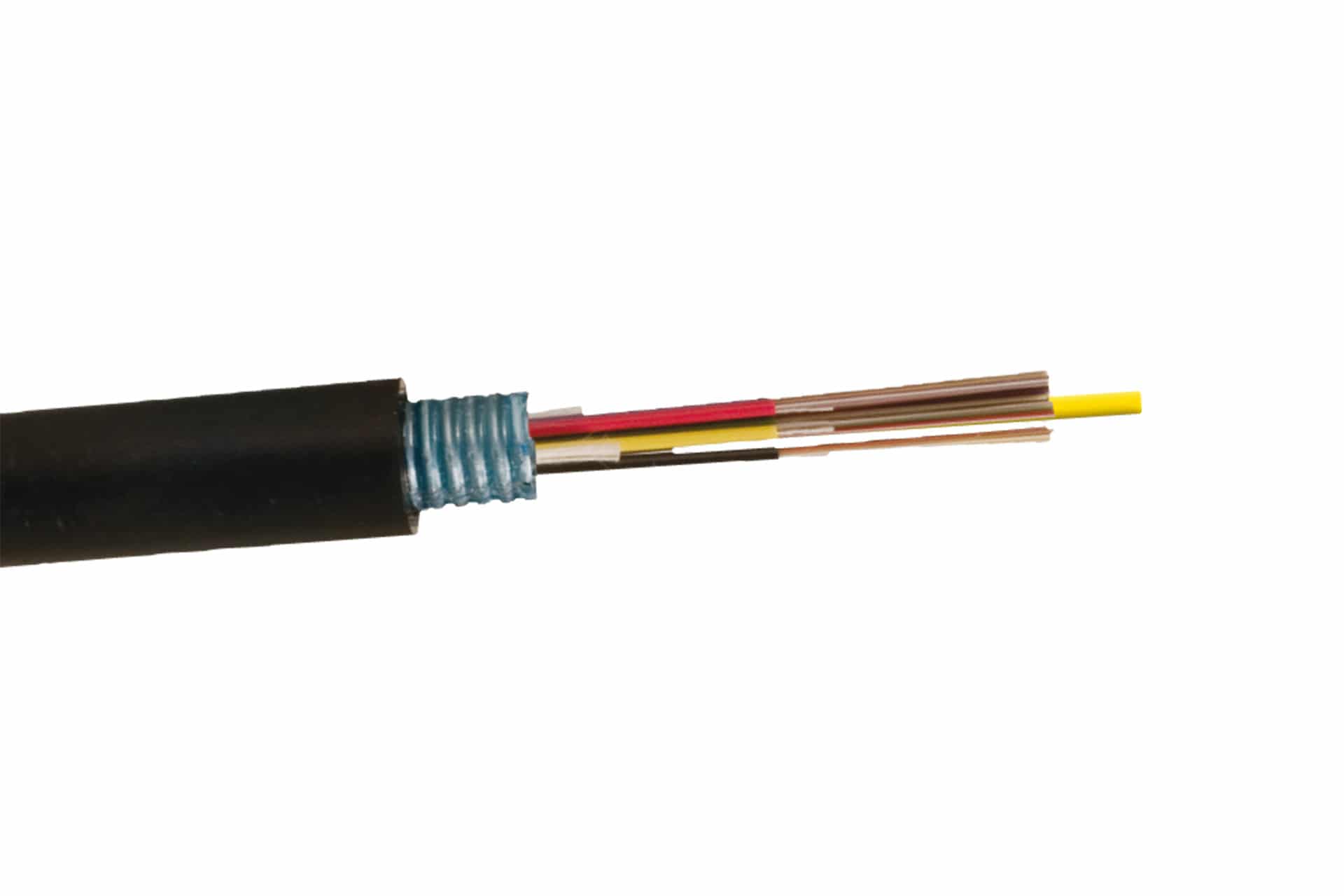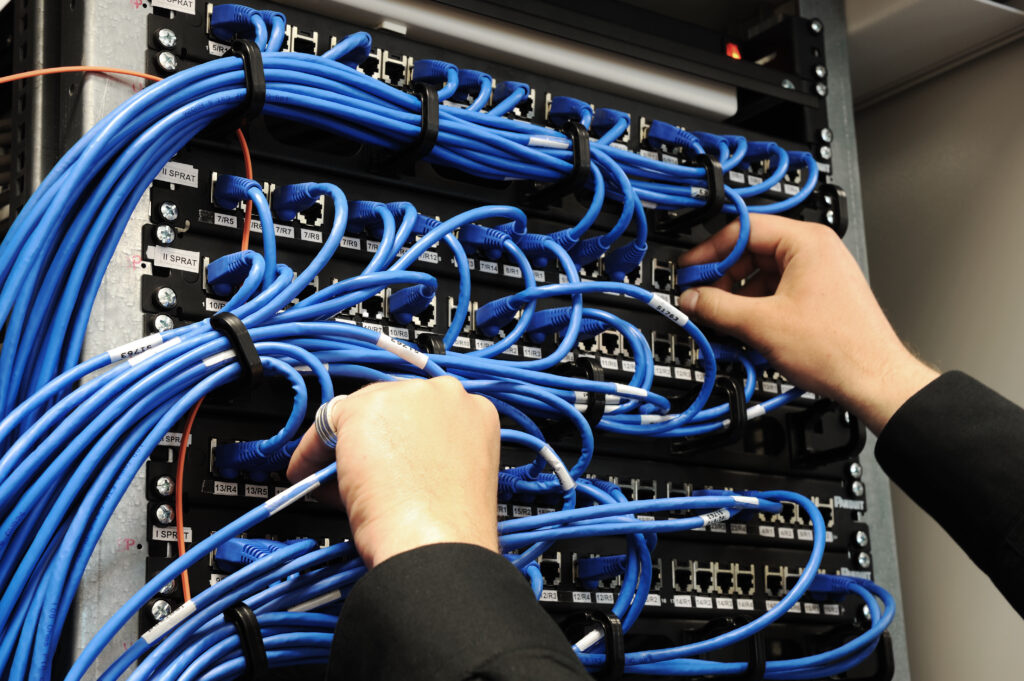Fiber Optics in Telecommunication
Fiber optics are thin wires that send and receive data through light pulses, this light acts as a track for carrying information from one point to another. These wires are used for sending and receiving information which increases communication. They are made of pure glass or plastic, they are thin and flexible. These wires are better than electric wires as they use light pulses for transferring data and electric wires use electric pulses for data transfer which prevents signal loss and provides better speed, fiber optics need more covering and protection than metal wires.

Fiber Optics in Telecommunication

Fiber optics are thin wires that send and receive data through light pulses, this light acts as a track for carrying information from one point to another. These wires are used for sending and receiving information which increases communication. They are made of pure glass or plastic, they are thin and flexible. These wires are better than electric wires as they use light pulses for transferring data and electric wires use electric pulses for data transfer which prevents signal loss and provides better speed, fiber optics need more covering and protection than metal wires.
Types of Fiber Optics
There are two main types of fiber optics based on how they spread light and that is:
- Multimode Fiber Optics: This type of fiber optics has a big core and allows more than one path for sending and receiving data.
- Singlemode Fiber Optics: This type of fiber optics has a smaller core than multimode and allows only one path for sending and receiving data.
Career Opportunities in Fiber Optics

- Laser Engineer: The role of a laser engineer is to create and manage laser systems using optics.
- Fiber optic engineer: A fiber optic engineer develops and manages optic communication systems.
- Fiber optic technician: The fiber optic technician is responsible for installing, maintaining, and repairing optic communication systems.
- Cable Technician: Cable technician installs and maintains cable networks for televisions and telecom systems.
- Fiber Optic Trainer: Fiber optic trainer trains people with fiber optic skills and distributes their knowledge.
Why Do You Need To Learn About Fiber Optics?
As we know the market is growing, to develop yourself with the same speed you must gain knowledge in areas that play a role in this development, and fiber optics is one of those. Learning about fiber optics is very useful as it can help you increase your capability of working in different areas, fiber optics are the fundamentals of every data transfer system. Learning optical fiber is a good career choice as it aligns with the future.
Jobs in fiber optics will never be outdated, if you are an expert in fiber optics the growth in the market will be at your side as it will benefit you according to surveys there will be 14,400 new job roles introduced by 2031 in this field.
One of the advantages is that you do not need a degree to learn fiber optics. Our fiber optics course will help you gain all-important knowledge which is related to the field. This optical fiber course can help you get different interesting jobs if you do not like sitting in one place then this course is for you. Jobs in this field allow you to travel to different places and explore more and work at different locations.
Fiber optics is everywhere, it can be seen in a variety of fields which makes you capable of working in a variety of fields like:
- Medical: fiber optics are very thin and flexible which makes them ideal for medical instruments, they are also used in instruments that are used for scanning the inside part of a human body.
- Defense: Due to their accuracy and long life, fiber optics are used in transferring data where high security is required which is why they are used by the military and also the aerospace industry.
- Communication: These wires are used for data transfer which is why they are useful for communication they are used for sending and receiving purposes.
- Mechanical Inspections: fiber optics are used by engineers to detect damages at places that cannot be reached and the same by plumbers to check pipes.
Course Details
| Language: | English |
|---|---|
| Level: | Beginner |
| Skills: | Cable Laying Skills, Network Connectivity, Communication Technology, Telecommunication |
| Age groups: | 18-24 years, 25-34 years, 35-44 years |
| Duration: | 2 Hours |
| Format: | 5 Video |
Why Kontentedge's Fiber Optics Online Course?
Our fiber optics course covers all important topics related to fiber optics needed for a shaped future in the field. In this fiber optic online course you will be learning things like fiber optics and their structure, types, and advantages. Fundamentals of PN junctions along with different optical sources (LED and LASER), optical detectors, and an understanding of PIN and APD devices, will make you an all-rounder in fiber optics.
Our optical fiber course will equip you with skills like Cable Laying Skills, Network Connectivity, Communication Technology, and Telecommunication. Become an expert in the curriculum of fiber optics grab the unlimited opportunities and secure yourself in the growing market with this course.
Frequently Ask Questions (FAQ)
Fiber Optics are thin wires that are used in sending and receiving data from one point to another through light pulses. These wires are made of plastic or pure glass. These are preferred over electric wires as they use light pulses and electric wires use electronic pulses. Light pulses prevent connection loss and result in efficient data transfer. Data transfer is a necessity and fiber optics do it efficiently hence they act as an important part of any business or household.
Fiber Optics are thin wires used for data transfer they are used in vast industries and play a vital role in them, For example:
- Medical: Due to their thin and flexible nature they are widely used in medical instruments.
- Communication: As they act as a medium for data transfer, they are best used for receiving and sending information.
- Defense: These wires are suited best for transferring data safely and with high speed which is why they are trusted by the military.
Fiber optics are widely used all across market.
Fiber optics are broadly accepted in the market as a data transfer medium. By using fiber optics you can prevent losing connection and error-free transfer. Fiber optics uses light pulses for data transferring which ensure low power loss and increased reliability. Fiber optics is preferred when there are long connections needed as it provides high speed and longevity.
Fiber optics are classified based on different properties:
- Based on the refractive index- Step index and graded index.
- Based on the material used- Plastic optical fiber and glass fiber.
- Based on the propagation of light- multimode and single mode.
Fiber optics use light pulses and light is the fastest medium which makes fiber internet very fast. These light pulses transfer data at high speed and give amazing results. Fiber optic internet can reach the speed of 10 Gigabits per second.
Fiber optics are the fastest way to transfer data as it uses light impulses which transfer data at the speed of light. The maximum speed of a fiber optic is 100 Gigabits per second or 10,000 Megabits per second. If we compare it to copper wire, copper’s speed is 300 megabits per second which is very low hence fiber optics are preferred.

